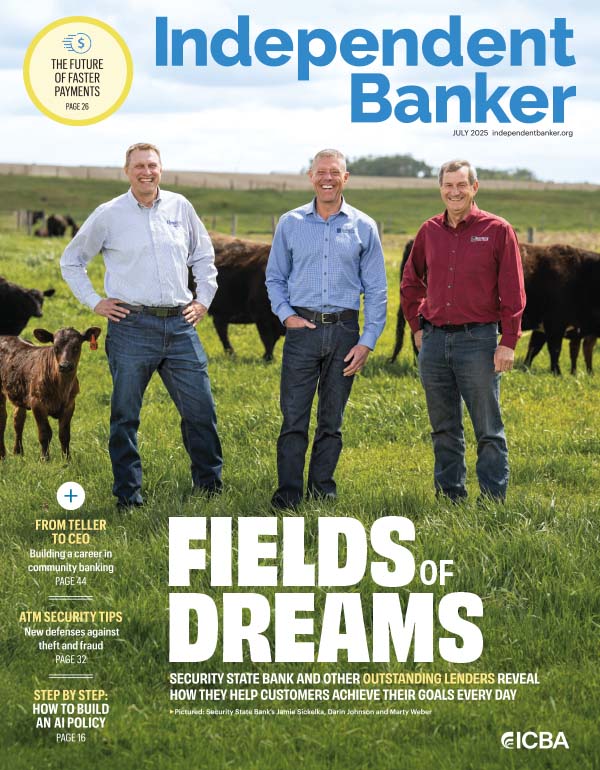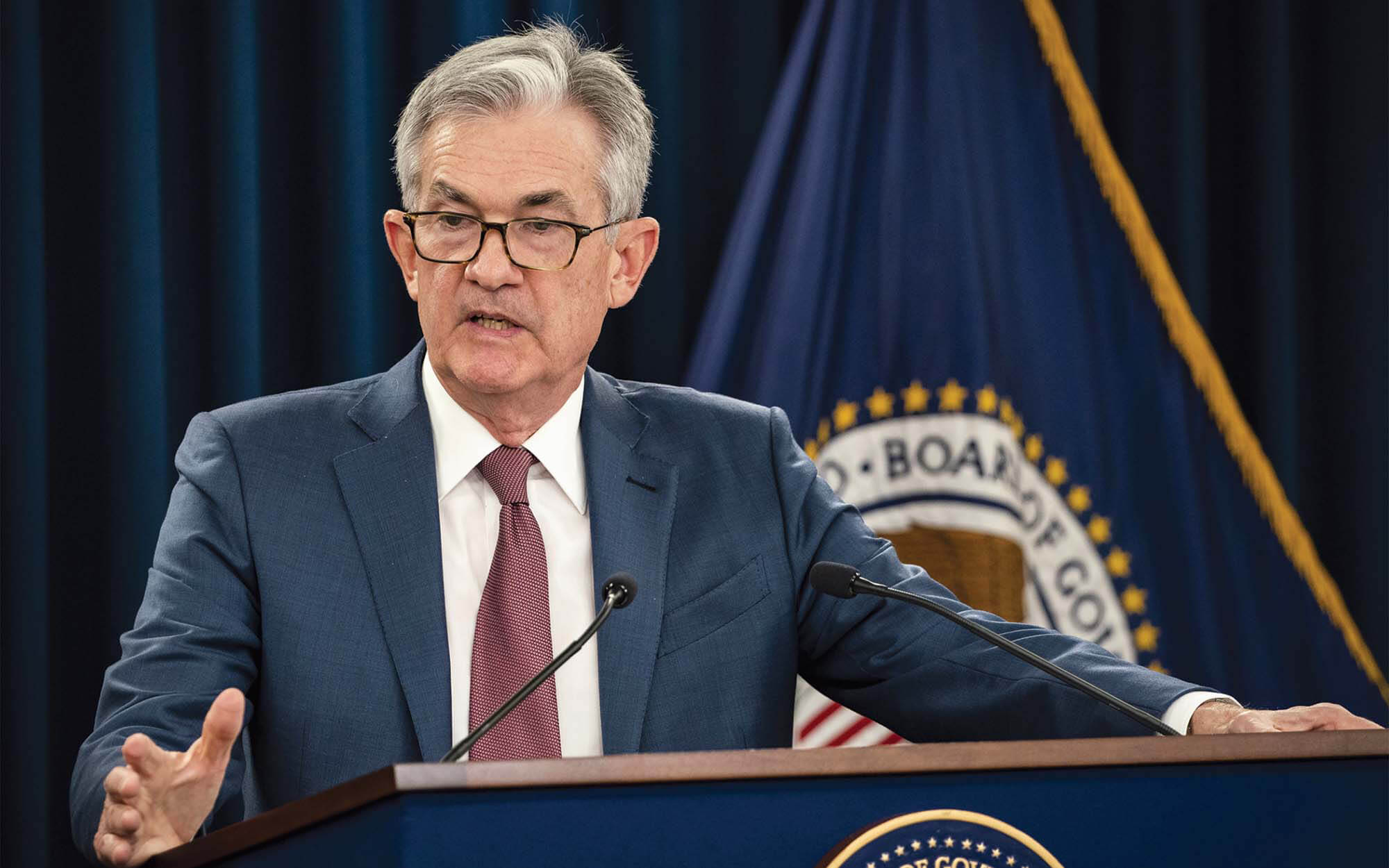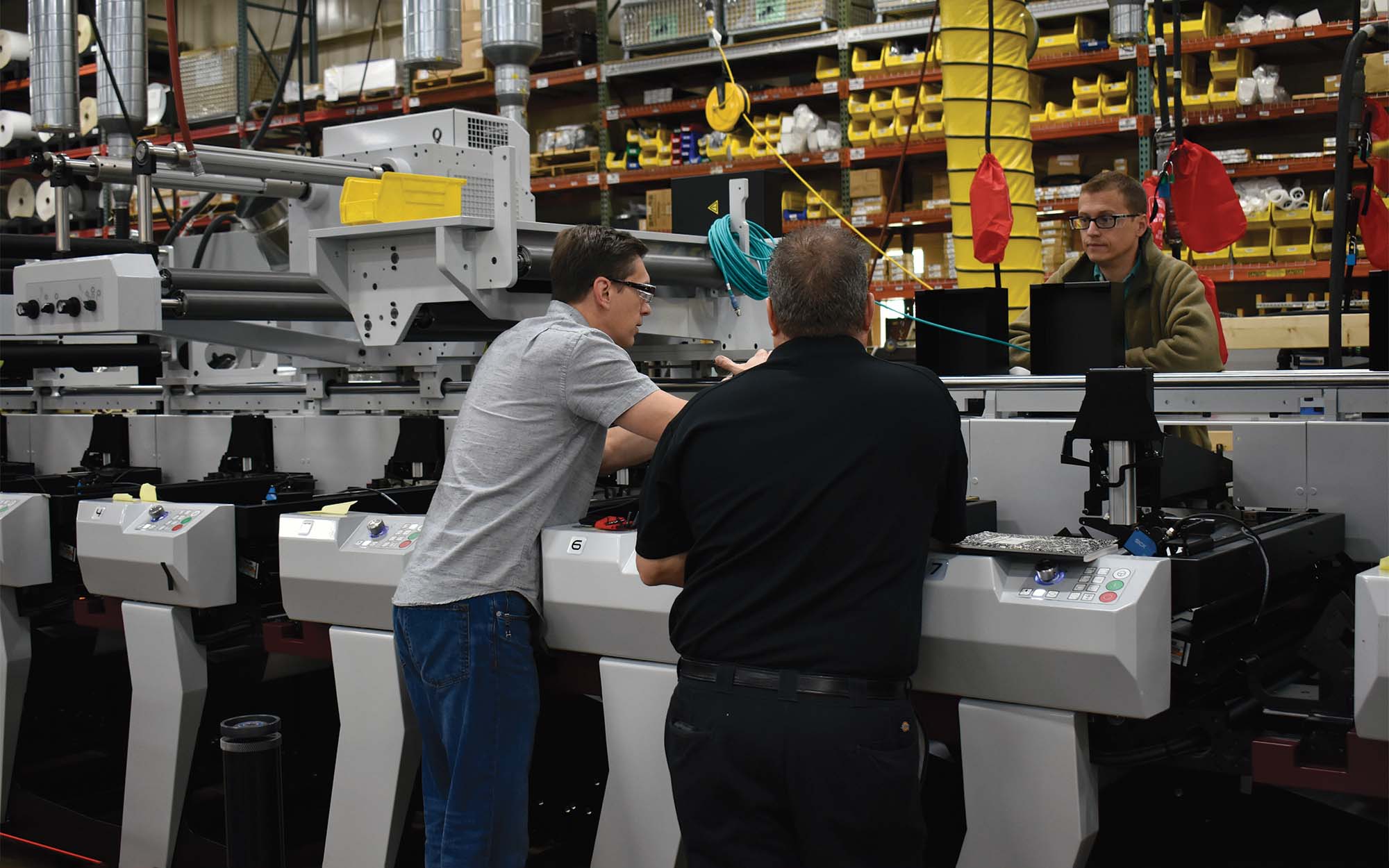The community banking industry released a collective breath on Aug. 5, 2019, when the Federal Reserve announced its intent to offer a 24/7 real-time payments service called FedNow. They finally had a definitive decision.
Quick Stat
$25,000
The Federal Reserve’s initial limit on transaction volume of FedNow at launch
Yet, the announcement gave rise to a host of other questions. What will the system look like from a technological standpoint? Will it work in conjunction with other solutions? Will the Fed expand the hours of Fedwire and the National Settlement Service? How will the industry achieve ubiquity and deal with fraud? And while many details remain undetermined, work is underway with an eye toward a launch in 2023 or 2024.
“I am confident that a lot of work and resources have been committed and the process is well underway,” says Bob Steen, chairman and CEO of $99 million-asset Bridge Community Bank in Mount Vernon, Iowa. “Still, there will be some ‘make it up as we go,’ because it is not as though there is a model to simply copy that will work in our banking system, with literally thousands of financial institutions that need to come along in the process.”
To support banks’ planning, the Fed has committed to a specific criteria for the system. First, the FedNow Service will operate 24/7, 365 days a year, and all financial institutions eligible to hold accounts at Reserve Banks will have access. Transactions will settle in banks’ master accounts or that of a correspondent bank.
The Fed plans to employ a credit model similar to other real-time payments systems around the globe. It will leverage the ISO 20022 messaging standard, allowing for descriptive information, such as remittance details, to move with the payment. This messaging standard supports additional descriptive information related to payments, such as payment instructions, confirmations and requests for payment. The Fed has shared that transactions will be irrevocable, so there is a finality behind the payment.
While it hasn’t released pricing yet, the Fed has pointed to the likelihood of fees being based on a per-item and fixed-participation fee structure. Features under consideration include an individual credit transfer transaction volume limit of $25,000 at launch.
Though there’s much to be confirmed, the Fed has emphasized the prominence of community banks in its decision to offer the FedNow Service. For example, in her September 2019 written testimony, Esther George, president and CEO of the Federal Reserve Bank of Kansas City, told the U.S. Senate Committee on Banking, Housing and Urban Affairs, “The Federal Reserve’s relationships with and connections to thousands of banks across the country provide a solid foundation for the FedNow Service to facilitate those banks gaining access to [a real-time gross settlement] infrastructure for faster payments, which would benefit small and midsize banks and the communities they serve.”
Tomorrow’s expectations
As of November, the Fed was reviewing the comment letters it received from the banking industry and other payments stakeholders. While concrete next steps will emerge from that input, community bankers can start formulating plans and having conversations with service providers and core processors now. Preparing for the day when full specifications emerge will ready community banks for real-time payments implementation.
“My number one piece of advice is to decide now,” Steen says. “If the decision is to wait to see what happens, the decision has been made. Doing nothing is really not an option.”
Timeline: ICBA’s payments advocacy
ICBA has long advocated for the Federal Reserve’s involvement in real-time payments. Here are some milestones in these efforts:
November 2011: ICBA bank leaders work with the Fed on P2P payments, helping to shape what becomes the Fed’s Payments System Improvement initiative, which launches less than a year later.
December 2013: ICBA emphasizes the urgent importance of faster payments to the Federal Reserve.
January 2014–May 2014: Convening bankers and financial trade associations, ICBA works to outline requirements of a faster payments system.
2015: To provide community bank perspectives, ICBA and bank leaders participate in the Fed’s Faster and Secure Payments Task Forces.
October 2016: ICBA and the North American Banking Company submit a faster payments application—later branded as ExcheQ—to the Fed Faster Payments Task Force.
April 2017: ICBA and credit union groups issue a joint letter to the Federal Reserve, urging its operational involvement in real-time payments.
July 2017: ICBA expresses its support for the recommendations released by the Fed’s Faster Payments Task Force.
December 2018: ICBA and community bankers respond to the Fed’s request for comment on its role in faster payments, stressing that Fed leadership would mean a more level playing field for all.
June 2019–July 2019: Increasing advocacy efforts, ICBA and community bankers author op-eds, run advertising and visit Capitol Hill to reiterate the importance of the Fed’s role in real-time payments.
August 2019: ICBA applauds the Federal Reserve’s announcement that it will create FedNow, a real-time payment and settlement service.






